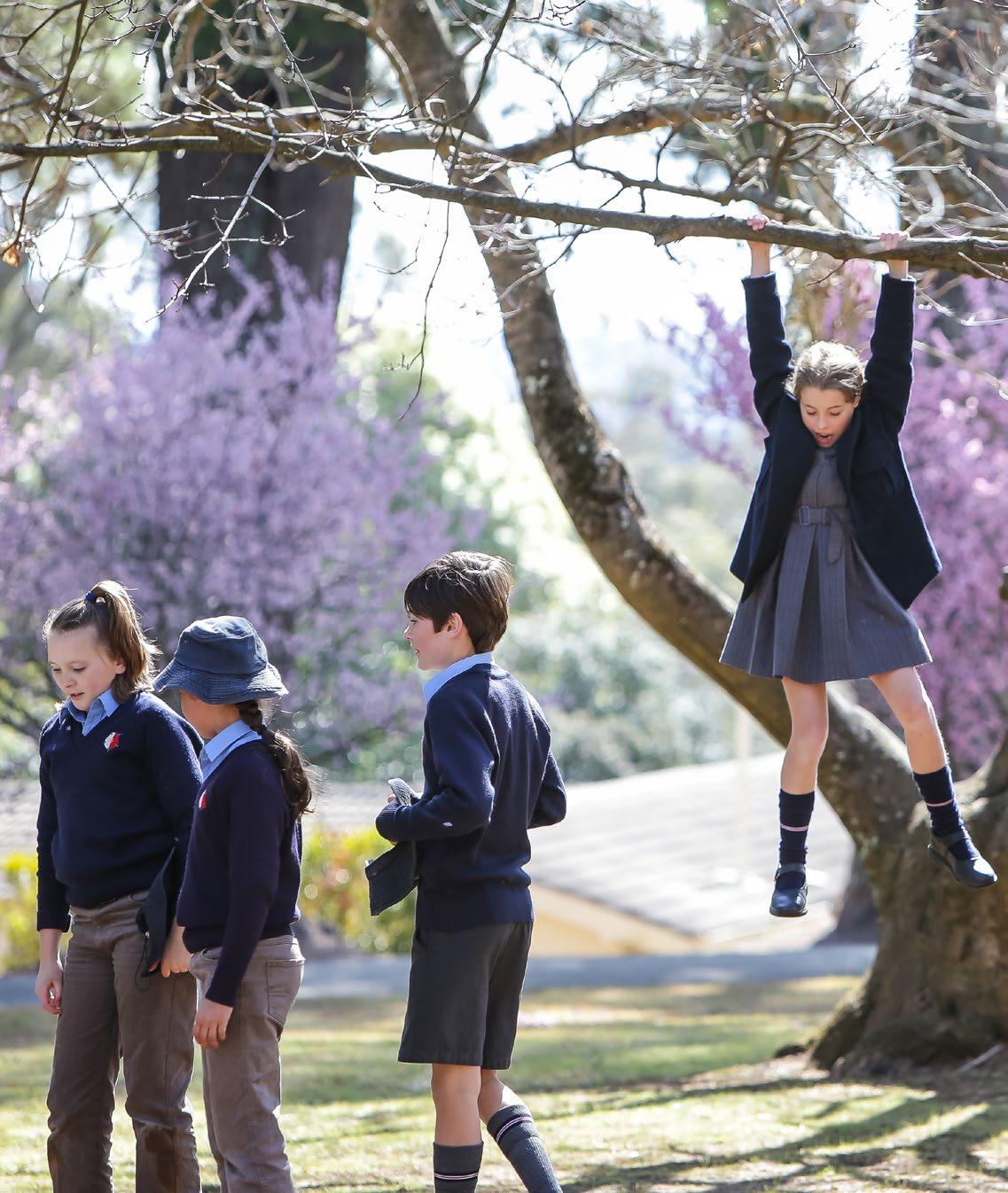
4 minute read
Light Horse
from 2020 Gazette
COMMUNITY
Service leadership has no greater example than that given by the Kingsmen who unselfishly volunteered to serve their country when called to do so during the Great War. As we look back at this time, there has been no equal representation of the King’s values in action than when the School rallied behind those who went to war.
Reflections from the Past: Letter Extracts
Dear Headmaster Waddy, We are all very proud of the flag which you gave us—or, rather, the regiment. Colonel Meredith has given the flag into my charge, and I will do my very best to keep it flying to the end; and if I’m spared, will faithfully see that it is returned to the old School, where we trust it will rest in the good chapel as an honourable record of the doings of the first regiment of Light Horse of the A.I.F.
Oswald Bruce Ryrie, written on board the Star of Victoria (the first troopship to depart Australia bound for the Middle East, October 1914)
Australian Corps Commander in World War 1, Lieutenant General Sir John Monash
My dear Waddy, Here we are still in Egypt keeping the flag flying, as well as the new one from the old School, which was flown on the day of the annexation of Egypt by England, when we marched through the streets of Cairo, past the saluting base, at which was General Sir John Maxwell, who was very favourably impressed with the Australian Expeditionary Force.
O.B. Ryrie, 21 January 1915, Egypt It was a nostalgic day when over 400 people gathered at The King’s School Chapel to share in the Light Horse Commemoration Service. The Service paid remembrance to the 100-year anniversary of the return of the School’s flag by the Light Horse Brigade, in 1919. King’s students, families, friends and those new to the community reflected on the 200 Old Boys who served in WWI, 101 of whom gave their lives.
The flag will hang in the Chapel to allow us to remember, honour, mourn, hope and never forget those who served and gave their lives for the sake of the freedoms and liberties we so often take for granted today.
The King’s Character
When war broke out in 1914 there were 220 boys enrolled at King’s. At this time, there was a great sense of pride in being part of the British Empire and a true willingness to support the former King’s students who had already joined up. The Headmaster Rev PS Waddy wrote to each Old Boy who joined offering them the prayers and best wishes from their Old School. Each day in Chapel, after the School lost its first Old Boy in battle, the ever-growing list of those who paid the ultimate sacrifice was read before each Service. The Headmaster reminded students that it was their duty to work hard, both at their studies and their games, to show their support for those who were fighting overseas. King’s supported the war effort in many ways, including hosting a concert to raise funds for the 1st ALH flag.
The Flag
There was great excitement around the School as preparations were made for the concert that was to support the Old Boys then training with the Light Horse. Many from the King’s community gathered to show support, helping fund the gift that would be given to the 1st Light Horse. The gift of a flag was then presented to Lt Colonel Meredith, with the promise it would travel to the war front.

Return of the Flag
During a service of Evensong, 3 November 1919, the battle weary flag bearing the colours of King’s and now those representing the 1st ALH was returned to the Chapel by Major AA White, supported by Major JM Maughan DSO and Major ND Barton. The flag initially passed to Captain OB Ryrie, remained in a kit bag in Alexandria when the men were shipped to Gallipoli. Their belongings eventually caught up with them and the flag arrived for battle at Gallipoli. It then saw service in Palestine before returning to the Chapel where it remained until the move to Gowan Brae.
20th Century Kingsmen
Kingsmen from the early 20th century displayed the same characteristics that resonate today. They demonstrated compassion towards those who suffered in the face of hardship and war, and regularly remembered the families of those who lost loved ones or suffered wounds. They raised money and support for those in need on the forefront and the soldiers’ needs back at home. They demonstrated respect towards Old Boys and Officers, eager to learn and prepare for the front, and were willing to serve and take on responsibility when the time came. Like the Kingsmen today, they are forever united under the motto – Fortitier et Fideliter.
Catherine Pearman Preparatory Teacher













